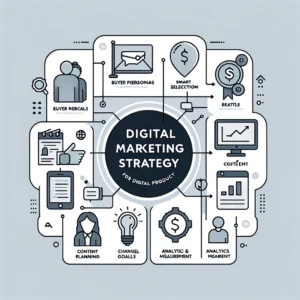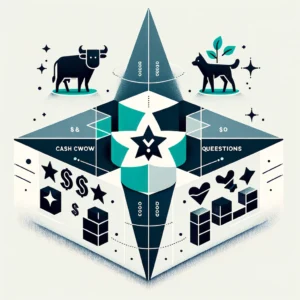Scaling a startup to 1000 customers requires careful planning and implementation of effective strategies. Based on the provided information, several strategies can be employed to achieve this goal.

1. Strategize
To begin, it is crucial to determine the most effective scaling strategy for your company. This involves considering the different options available and evaluating their potential impact on customer acquisition and growth. By researching and analyzing strategies for scaling a startup to 1000 customers, you can make informed decisions about the best approach to take 1.
Need help in Scaling? Let’s Talk!
2. Streamline Systems
Simplifying and optimizing internal processes is essential to ensure efficiency and scalability. By streamlining systems, you can eliminate unnecessary steps and bottlenecks that may hinder growth. It is important to assess the current processes and identify areas where improvements can be made to support the scaling process 1.
3. Automate
Implementing automation tools and technologies can significantly reduce manual effort and streamline operations. By automating repetitive tasks and workflows, you can free up valuable time and resources to focus on customer acquisition and growth. It is advisable to explore available automation solutions and choose the ones that align with your specific business needs 1.
4. Outsource
Consider outsourcing certain tasks or functions to external partners or contractors. This allows you to leverage specialized expertise and focus on your core competencies. By delegating non-core activities, you can allocate more time and resources to customer acquisition and other critical growth initiatives 1.
5. Invest in Marketing
Allocate resources to marketing efforts to increase visibility, attract new customers, and drive growth. Developing a comprehensive marketing strategy that aligns with your target audience and business goals is crucial. By investing in various marketing channels and tactics, you can effectively reach potential customers and generate leads 1.
6. Improve Branding
Enhance your brand’s image and reputation to build trust and credibility among customers. A strong brand identity can differentiate your startup from competitors and attract customers. Focus on developing consistent messaging, visual elements, and customer experiences that align with your target audience’s preferences and values 1.
7. Staff Effectively
Ensure you have the right team with the necessary skills and qualifications to support your customers’ needs. Hiring and retaining talented individuals who are aligned with your startup’s vision and goals is crucial. Building a high-performing team can significantly contribute to customer satisfaction and successful scaling 1.
8. Know Your Audience
Gain a deep understanding of your target audience and their preferences. This knowledge allows you to tailor your offerings and marketing strategies effectively. By conducting market research, analyzing customer data, and actively seeking feedback, you can refine your products and services to better meet customer needs 1.
9. Start a Knowledge Base
Establish a comprehensive knowledge base to address common customer issues and provide self-service resources. By offering readily accessible information and solutions, you can improve customer satisfaction and reduce the need for manual support. Consider creating a user-friendly knowledge base that covers frequently asked questions and troubleshooting guides 2.
These strategies can provide a solid foundation for scaling a startup to 1000 customers. However, it is important to note that each startup is unique, and a tailored approach may be necessary to achieve optimal results.
Customer Acquisition Techniques for Startups
In addition to scaling strategies, customer acquisition techniques play a crucial role in getting a startup’s products in front of more prospective customers. The provided information offers insights into various techniques that can be considered:
1. Content Marketing
Creating valuable and relevant content to attract and engage potential customers is an effective strategy. By producing informative blog posts, articles, videos, or podcasts, startups can establish themselves as industry thought leaders and build trust with their target audience 1.
2. Search Engine Optimization (SEO)
Optimizing websites and content to improve visibility and rankings in search engine results can drive organic traffic. By implementing SEO best practices, startups can increase their chances of appearing in relevant search queries and attracting potential customers 1 3.
3. Mobile Marketing
Leveraging mobile platforms, such as mobile apps and SMS marketing, can help reach a wider audience and increase customer acquisition. With the increasing use of smartphones, startups can leverage mobile marketing techniques to engage potential customers and drive conversions 1.
4. Social Media
Engaging with potential customers through social media platforms can boost brand awareness and attract new customers. By creating compelling social media content, interacting with followers, and running targeted ad campaigns, startups can effectively reach their target audience and drive customer acquisition 1 5.
5. Email Marketing
Building an email list and sending targeted, personalized emails can be an effective way to nurture leads and convert them into customers. By creating valuable content and offering exclusive promotions or discounts, startups can build strong relationships with their email subscribers and drive customer acquisition 1 6.
6. Referral Program
Implementing a referral program where existing customers are incentivized to refer others can lead to a significant increase in customer acquisition. By rewarding customers for successful referrals, startups can tap into their existing customer base to attract new customers 1 2.
7. Paid Advertising
Utilizing paid advertising channels, such as online ads or influencer partnerships, can help reach a larger audience and drive customer acquisition. By investing in targeted advertising campaigns, startups can increase their visibility and attract potential customers who may not have been aware of their products or services 1.
It is important to note that the effectiveness of these techniques may vary based on the nature of the startup and its target audience. Startups should carefully evaluate their options and choose the techniques that align with their goals and resources.
Insights from Case Studies
While there are no explicit case studies about scaling a startup to 1000 customers in the provided information, there are valuable insights and examples related to scaling startups and attracting early customers.
- According to a sequel case study by Teixeira, some companies had to scale up dramatically from 1,000 customers to over 1 million 1.
- Blog posts of case studies shed light on the challenging nature of scaling a startup 2.
- Startups like Uber, Airbnb, and Etsy attracted their first 1,000 customers by doing things that don’t scale and thinking like their customers 3.
- Some startups found success by focusing on a single strategy for attracting early users, while others found success using a handful of strategies 4.
- A single case study discusses the role of leadership in the success of a startup that successfully transitioned into a Scaleup 5.
While these case studies do not directly address scaling a startup to 1000 customers, they provide valuable insights into the challenges and strategies involved in scaling startups and attracting early customers. Startups can draw inspiration from these examples and adapt the strategies to their specific growth goals.
Tips for Successful Startup Scaling
In addition to the strategies and customer acquisition techniques mentioned above, there are several tips that can contribute to successful startup scaling:
1. Plan Early and Often
Prioritize customer acquisition and retention, build a scalable business model, assemble a strong team, and focus on key metrics from the early stages of your startup. Regularly reassess and adjust your plans to adapt to the dynamic nature of the business environment 1.
2. Create a Fresh and Impactful Marketing Campaign
Telling more people about your startup can be a powerful strategy for scaling up. Develop a bold and impactful marketing campaign that effectively communicates your value proposition and attracts new customers 2.
3. Keep it Simple
When scaling a startup, it is important to focus on customer satisfaction, hiring the right talent, leveraging technology, and implementing new processes. Keeping things simple can help manage the challenges that come with a growing business 3.
4. Set Growth Goals and Examine Processes
Articulate clear growth goals and regularly evaluate existing processes to identify areas for improvement. Setting specific targets for revenue and operating margin growth can provide a roadmap for scaling success 4.
5. Strategize and Streamline Systems
Develop a comprehensive strategy for scaling your startup and streamline internal systems to improve efficiency. Automation, outsourcing, and effective marketing and branding are key components of successful scaling 5.
6. Integrate Hard and Soft Skills with Horizontal Leadership
Running and scaling a successful startup requires a combination of hard and soft skills. Adopting a horizontal leadership approach that values collaboration and decision-making based on data can contribute to success 6.
While these tips provide valuable guidance for startup scaling, it is important to tailor them to your specific business context and goals. Each startup’s journey is unique, and a flexible approach is essential for success.
In conclusion, scaling a startup to 1000 customers requires a cohesive implementation of strategies, customer acquisition techniques, and tips for successful scaling. By strategizing, streamlining systems, automating processes, outsourcing tasks, investing in marketing and branding, and understanding the target audience, startups can effectively attract and retain customers. Additionally, adopting customer acquisition techniques such as content marketing, SEO, mobile marketing, social media engagement, email marketing, referral programs, and paid advertising can help drive customer acquisition. Insights from case studies and tips for successful scaling further provide valuable guidance for startups embarking on the scaling journey.



